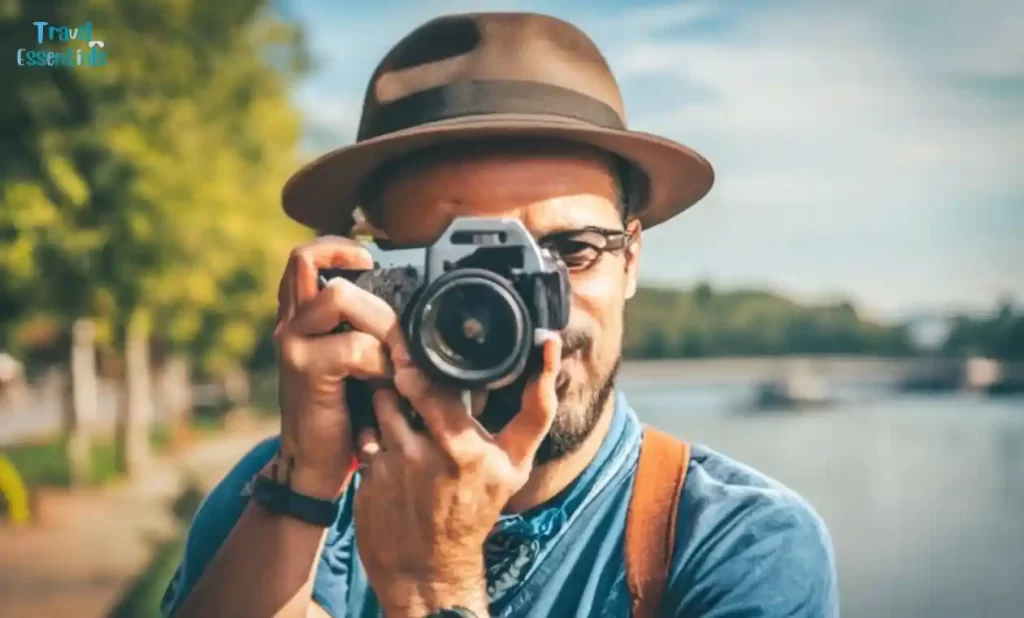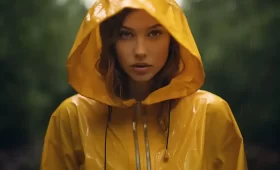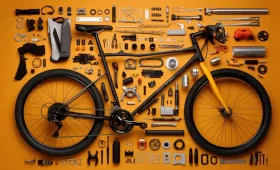Mastering Travel Photography: Tips and Techniques

Traveling is a magical journey that allows us to explore new landscapes, cultures, and experiences. It’s a time when we create memories that can last a lifetime. And what better way to preserve those memories than through the art of photography?
In this digital age, almost everyone has access to a camera, whether it’s a dedicated DSLR or a smartphone. But taking truly stunning travel photos requires more than just owning a camera; it involves mastering photography techniques, understanding composition, and having the right gear at your disposal.
In this guide, we will delve into the world of travel photography, offering valuable insights into techniques that will elevate your photography game, tips on creating well-composed shots, recommendations for the best camera gear for travelers, insights into photo editing software and tools, and much more.
Whether you’re a novice with a point-and-shoot camera or a seasoned pro with a DSLR, there’s something here for everyone. So, pack your camera, charge your batteries, and get ready to embark on a journey to capture memories that will last a lifetime. Let’s dive into the world of travel photography together.
Essential Travel Photography Techniques
Travel photography is about more than just pointing and shooting; it’s about capturing the essence of a place or moment in a compelling way. Here are some essential techniques to master:
Understanding Light
- The key to great photography is understanding how light works. Learn about natural light, golden hour, and how to use shadows to your advantage.
- Experiment with different types of light sources, such as backlighting and side lighting, to create dramatic effects in your photos.
Composition Rules
- Explore the rule of thirds, leading lines, and framing to compose visually appealing shots.
- Experiment with different perspectives, like low-angle and high-angle shots, to add depth and interest to your photos.
Capturing Motion
- Freeze fast-moving subjects with a fast shutter speed or embrace motion blur to convey a sense of movement.
- Use panning to keep your subject sharp while blurring the background, adding a dynamic feel to your images.
Depth of Field
- Master aperture settings to control depth of field. Wide apertures (low f-stop numbers) create a shallow depth of field, ideal for portraits, while narrow apertures (high f-stop numbers) ensure everything is in focus for landscapes.
Framing and Perspective
- Experiment with framing techniques using natural elements like doorways, windows, or overhanging branches.
- Change your perspective by getting low to the ground or shooting from above to create unique compositions.
Patience and Timing
- Patience is key to capturing the perfect moment. Wait for interesting subjects or unique lighting conditions.
- Anticipate action and be ready to capture it at the right moment, whether it’s a street performer’s leap or a bird in flight.
Camera Gear Recommendations for Travelers
Having the right camera gear can make a significant difference in your travel photography. In this section, we’ll discuss essential equipment and recommendations:
Choosing the Right Camera
- Consider your travel style and needs when selecting a camera. Mirrorless and compact cameras are great for portability, while DSLRs offer more control.
- Invest in a camera with manual settings to have full creative control over your shots.
Lenses
- Opt for versatile lenses like a standard zoom (18-55mm) for general shooting.
- A prime lens with a wide aperture (e.g., 50mm f/1.8) is excellent for portraits and low-light conditions.
- Consider a wide-angle lens (10-20mm) for landscapes and architecture.
Tripods and Stabilization
- A lightweight and compact travel tripod is invaluable for long exposures and capturing steady shots.
- Use image stabilization (in-camera or lens-based) for handheld shooting in low light.
Accessories
- Invest in extra batteries and memory cards, as you’ll likely take many photos during your travels.
- A camera bag with padded compartments keeps your gear safe and organized.
- Lens filters (polarizers and ND filters) can enhance your shots in specific situations.
Smartphone Photography
- Don’t underestimate the capabilities of your smartphone. It’s a powerful tool for travel photography, and there are many apps for editing and enhancing your mobile photos.
Drones (Optional)
- Drones can capture breathtaking aerial shots, but be aware of local regulations and restrictions when using them in different countries.
Photo Editing Software
- Familiarize yourself with photo editing software like Adobe Lightroom or mobile apps such as Snapseed to enhance your images after capturing them.
Photography Composition Tips for Memorable Travel Photos

Creating visually captivating travel photos goes beyond having the right gear. Composition plays a crucial role in making your images stand out. Here are some composition tips:
Rule of Thirds
- Divide your frame into thirds both horizontally and vertically. Place your subject or key elements along these lines or at their intersections for a balanced composition.
Leading Lines
- Use natural or man-made lines, like roads, rivers, or fences, to lead the viewer’s eye through the image and add depth.
Framing
- Frame your subject with elements within the scene, such as arches, doorways, or overhanging branches, to draw attention to the subject.
Symmetry and Patterns
- Capture symmetry in architecture or patterns in nature for visually striking compositions.
Depth and Perspective
- Create depth by including foreground elements. This can add a sense of scale and dimension to your photos.
The Golden Hour
- Shoot during the golden hours, which are the first and last hours of sunlight in a day. The soft, warm light enhances your photos.
Candid Moments
- Capture candid moments of locals or fellow travelers to tell authentic stories of your journey.
Minimalism
- Sometimes, less is more. Embrace minimalism by focusing on a single subject or a simple composition.
Experiment with Angles
- Don’t hesitate to get low or high to find unique angles and perspectives.
Patience and Timing
- Wait for the right moment. Sometimes, a few extra seconds can result in the perfect shot.
Post-Processing
- Use post-processing tools to enhance colors, contrast, and sharpness, but avoid over-editing for a natural look.
Essential Photo Editing Tools for Travelers
Editing your travel photos can take them from good to outstanding. Whether you’re a beginner or an experienced photographer, these essential photo editing tools and software can help you enhance your travel images:
Adobe Lightroom
- Adobe Lightroom is a versatile photo editing tool that allows you to adjust exposure, color balance, and sharpness. It’s great for organizing and editing large batches of photos.
Adobe Photoshop
- Photoshop offers advanced editing capabilities, allowing you to retouch photos, remove unwanted objects, and create stunning composite images.
Snapseed
- Snapseed is a user-friendly mobile app for both Android and iOS. It offers a wide range of editing tools and filters to enhance your photos on the go.
VSCO
- VSCO is known for its film-like presets and simple editing tools. It’s a popular choice among mobile photographers.
Lightroom Mobile
- The mobile version of Adobe Lightroom is powerful and user-friendly, making it perfect for quick edits while traveling.
Capture One Pro
- Capture One Pro is a professional-grade editing software known for its exceptional color grading and tethering capabilities.
DxO PhotoLab
- DxO PhotoLab is renowned for its automatic corrections, making it a time-saving choice for photographers.
Luminar AI
- Luminar AI uses artificial intelligence to enhance photos with one-click adjustments, making it accessible for beginners.
GIMP (GNU Image Manipulation Program)
- GIMP is a free, open-source alternative to Photoshop, suitable for those on a budget.
Canva
- Canva is perfect for creating graphics, collages, and social media posts with your travel photos.
Remember that editing should enhance the qualities of your photos, not replace them. Use these tools to bring out the best in your images while maintaining their authenticity.
Now, let’s conclude our journey through travel photography with a summary and some parting tips for creating memorable travel photos.
Conclusion: Capturing Lasting Memories Through Travel Photography
As we conclude our exploration of travel photography, remember that it’s not just about taking pictures but about freezing moments and preserving memories. Through this journey, you’ve gathered valuable insights and techniques to elevate your travel photography game. Now, let’s recap the key takeaways and inspire you to embark on your next adventure with your camera in hand.
First and foremost, mastering the art of travel photography requires patience, practice, and a keen eye for details. It’s about seeing the extraordinary in the ordinary, capturing the essence of the places you visit, and telling stories through your lens.
We delved into essential techniques, including understanding composition rules, harnessing the power of light, and framing your shots creatively. By mastering these skills, you can create images that not only impress but also evoke emotions and transport viewers to the locations you’ve explored.
In addition to technique, we explored the importance of preparation. Properly equipping yourself with the right camera gear, accessories, and backup equipment ensures you’re ready to capture those spontaneous, once-in-a-lifetime moments.
Furthermore, we discussed the significance of post-processing. Editing your photos allows you to add your personal touch and enhance their visual impact. Tools like Adobe Lightroom, Photoshop, and mobile apps provide endless possibilities for turning your raw shots into captivating works of art.
Lastly, don’t forget that your travel photography journey is about more than just the photos; it’s about the experiences and connections you make along the way. Embrace the culture, interact with locals, and immerse yourself in the destinations you visit. These experiences will not only enrich your photography but also your life.
So, as you plan your next adventure, whether it’s a distant land or your own backyard, carry these lessons with you. Embrace the challenge, seek out the beauty in the world, and continue capturing those moments that make travel a lifelong passion. Your camera is your passport to new experiences and lasting memories. Happy shooting!
Now, grab your camera, hit the road, and keep creating those stunning travel photos that tell your unique story. Safe travels and happy photography!
Related Post –
- Minimalist Travel Guide: Pack Light, Travel Right
- Travel Smart: Business Trip Tips & Tricks
- Essential Camping Tips: Your Guide to Outdoor Adventures
- Explore the Wilderness: Solo Hiking Tips
Travel Photography FAQs
What camera gear is best for travel photography?
For travel photography, lightweight mirrorless or DSLR cameras with versatile lenses are popular choices. Consider a wide-angle lens for landscapes and a prime lens for portraits.
How can I improve my composition in travel photos?
To enhance composition, use the rule of thirds, leading lines, and framing techniques. Experiment with different angles and perspectives to create visually appealing shots.
What's the best time of day for travel photography?
The "golden hours" of sunrise and sunset provide soft, warm light, ideal for photography. Mid-morning and late afternoon also offer good lighting conditions.
Do I need to edit my travel photos?
Editing can enhance the quality of your photos. Basic adjustments like exposure, contrast, and color correction can make a significant difference.
What photo editing software is recommended for travel photography?
Adobe Lightroom is a popular choice for editing travel photos due to its powerful tools for enhancing and organizing images.
How can I capture candid moments while traveling?
To capture candid shots, use a telephoto lens to stay discreet, blend into the environment, and be patient. Candid moments often arise when people are relaxed.
What's the etiquette for photographing people in different cultures?
Respect local customs and ask for permission when photographing people. Building rapport and showing genuine interest can lead to more authentic portraits.
What are the best practices for protecting my camera gear while traveling?
Invest in a quality camera bag, use protective filters on lenses, and keep your gear clean and dry. Consider insurance for added peace of mind.
How can I make money with my travel photos?
You can sell your travel photos as stock images, collaborate with brands and tourism boards, or even start a photography blog or social media account to monetize your work.


